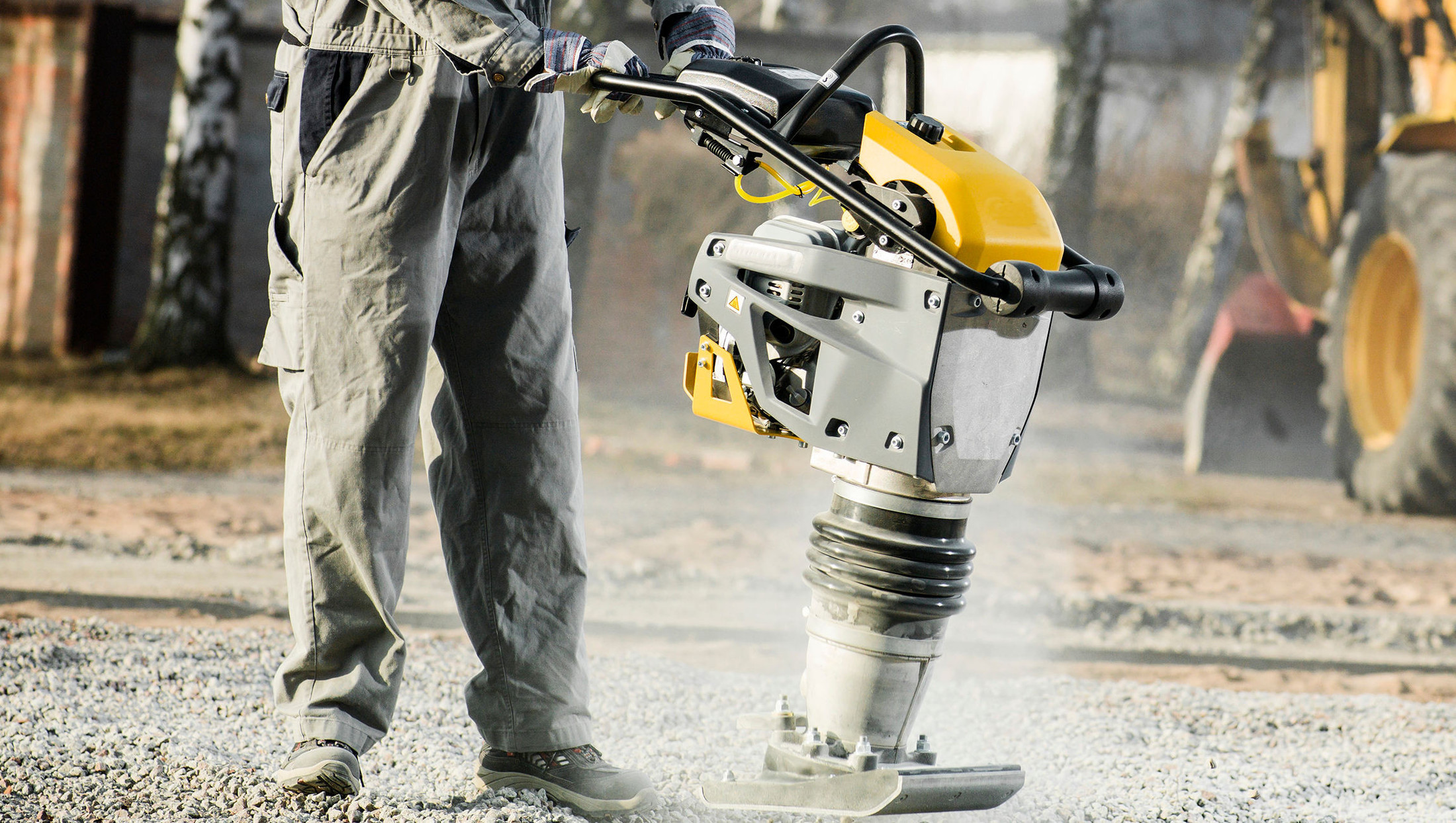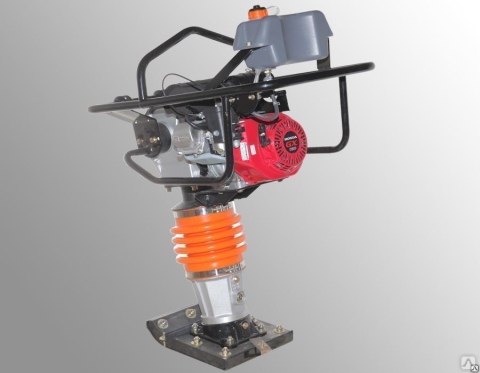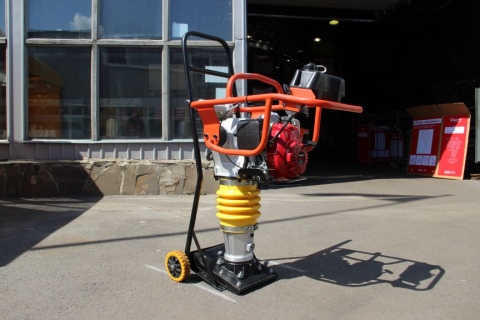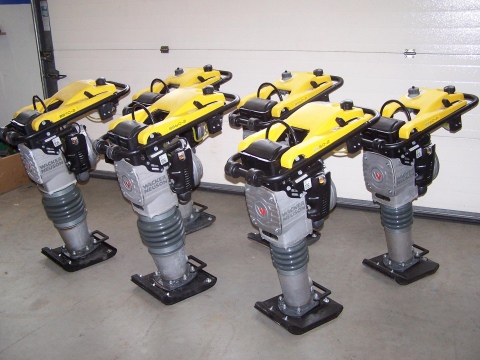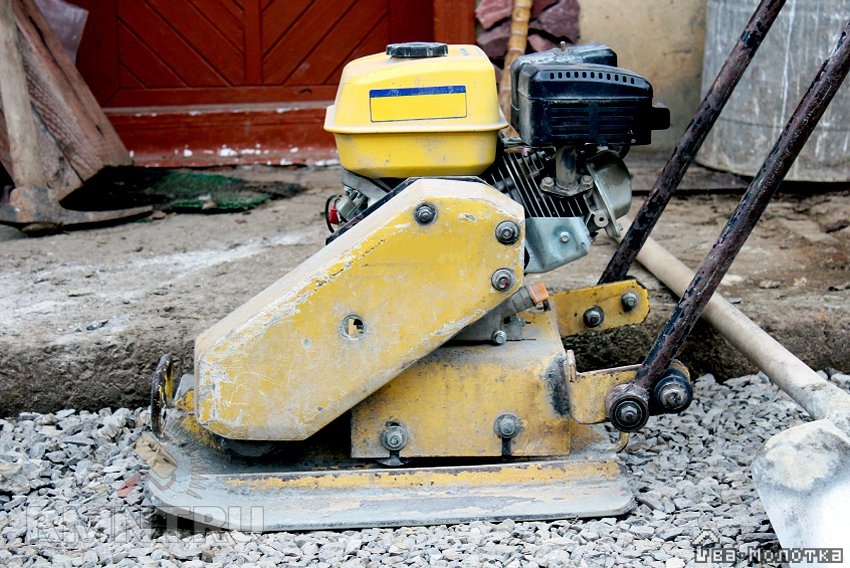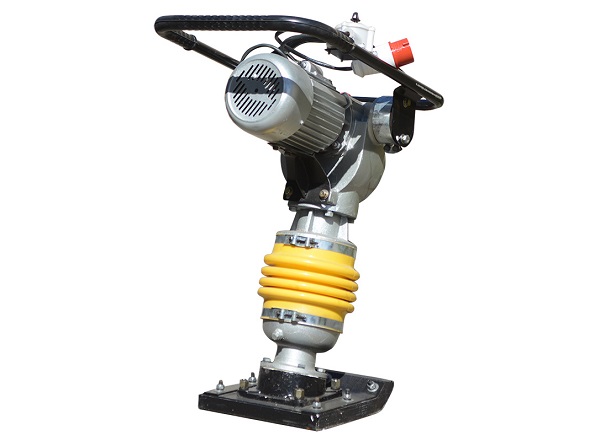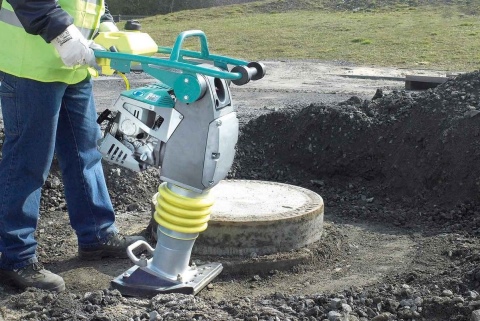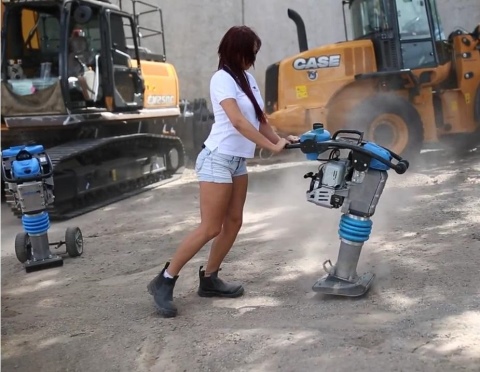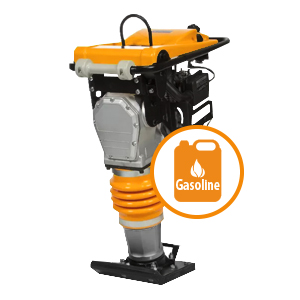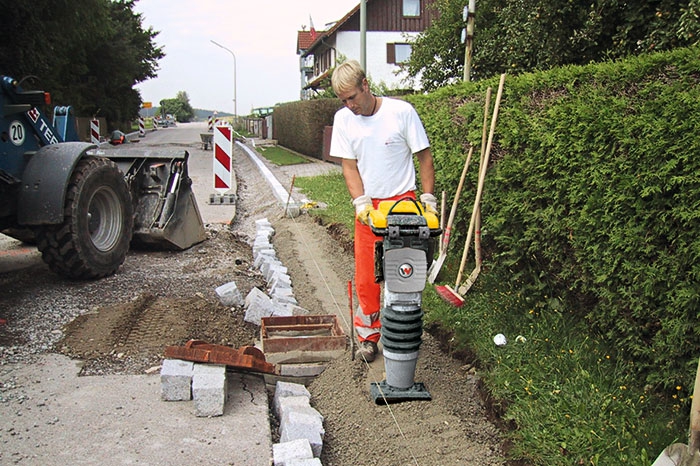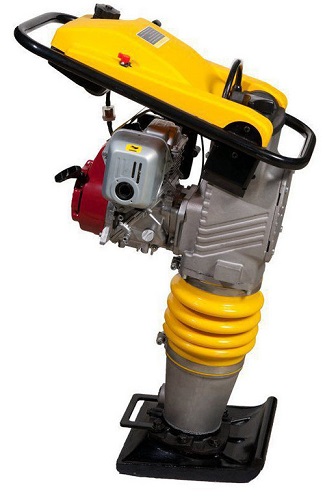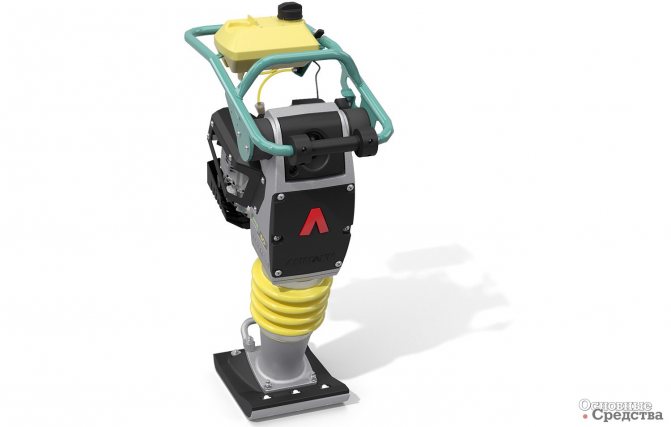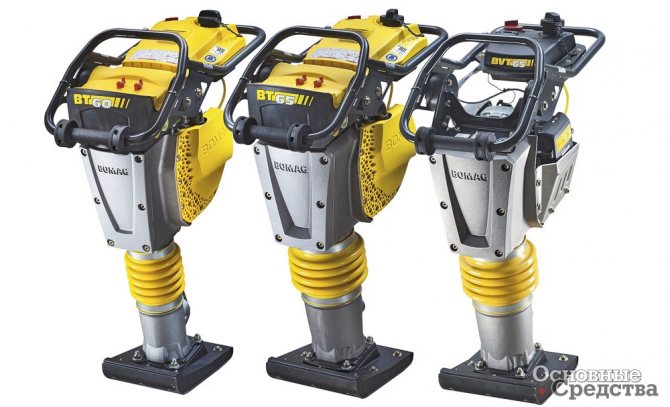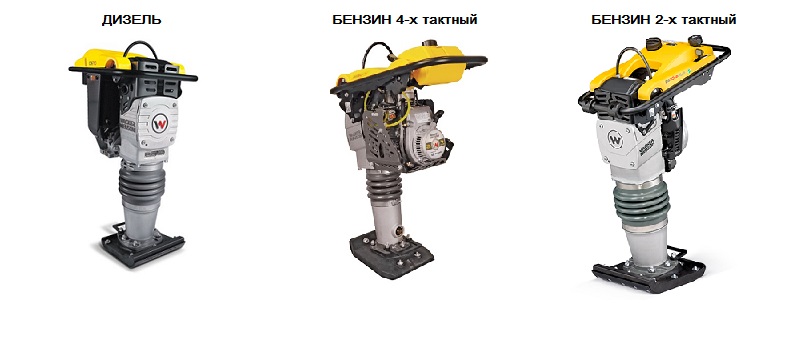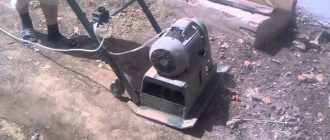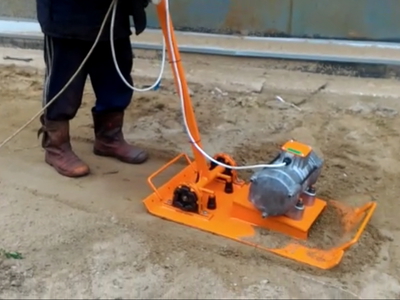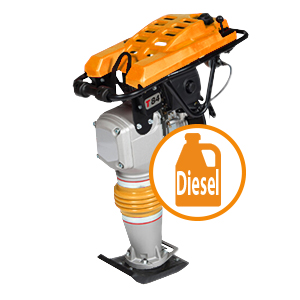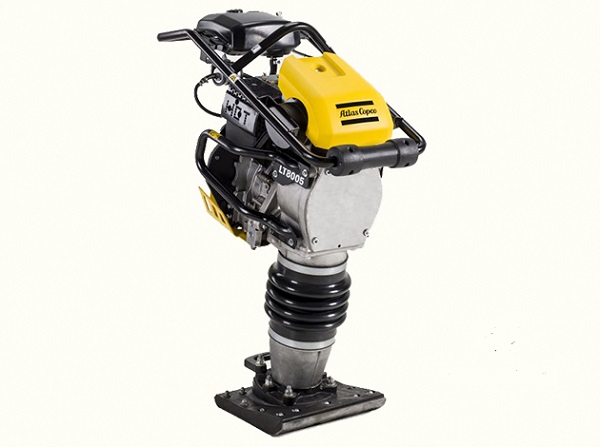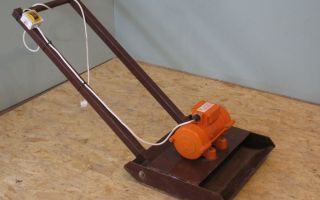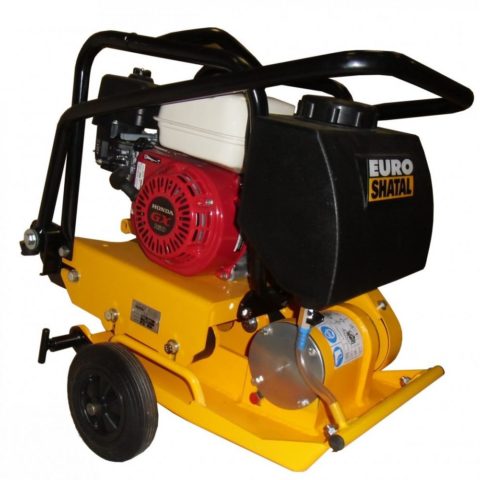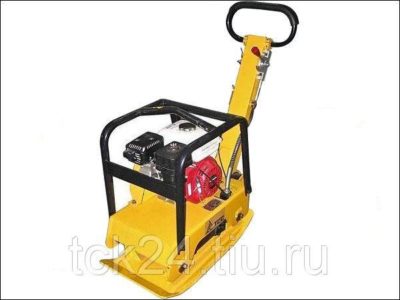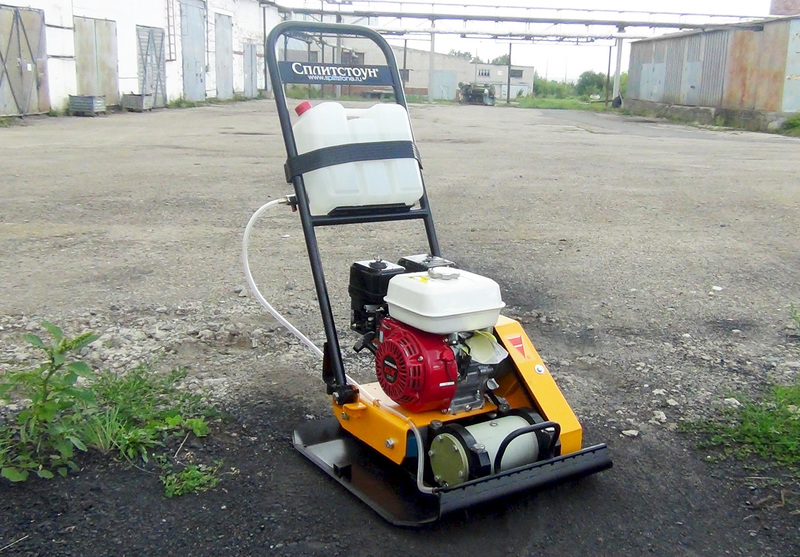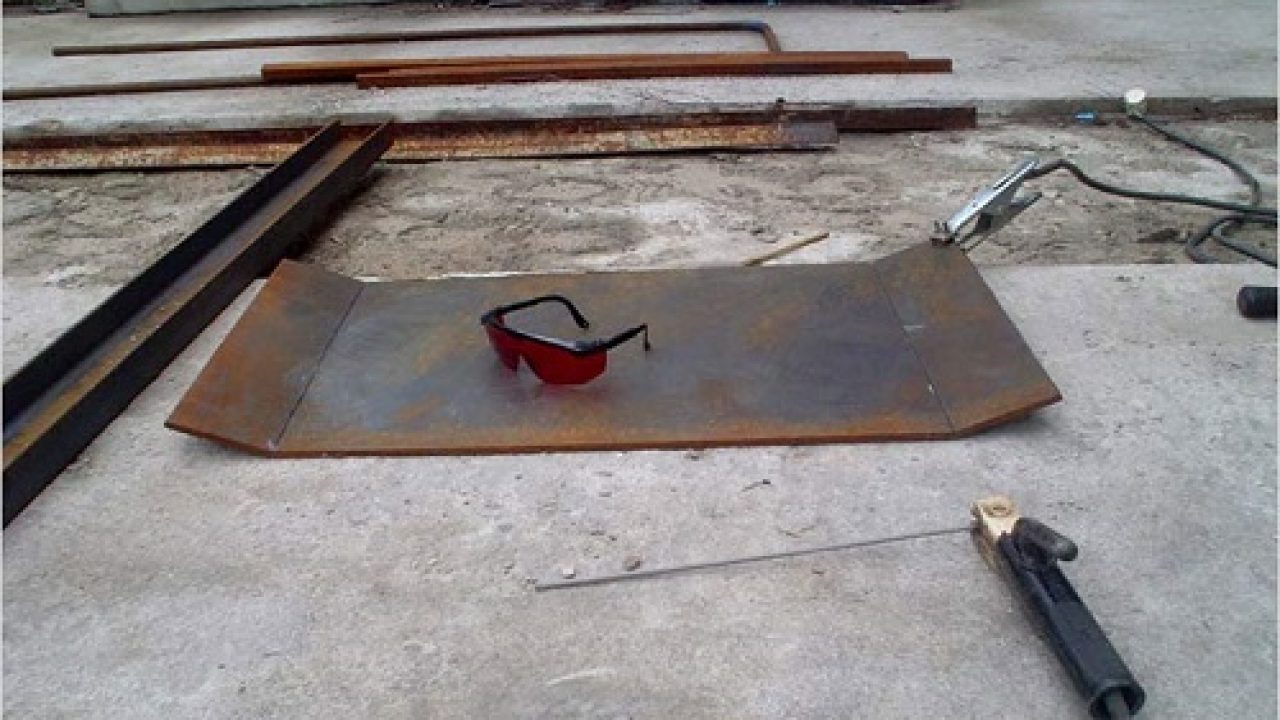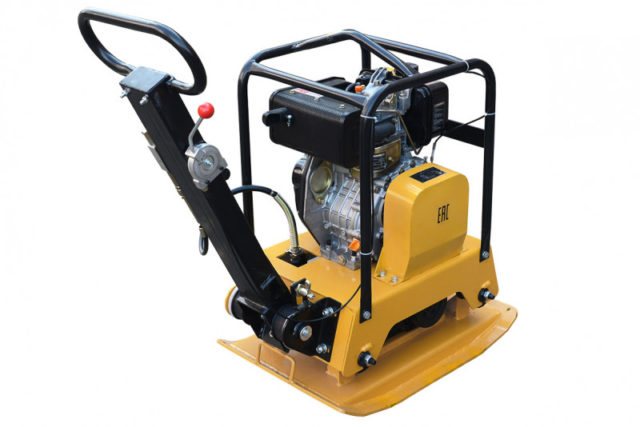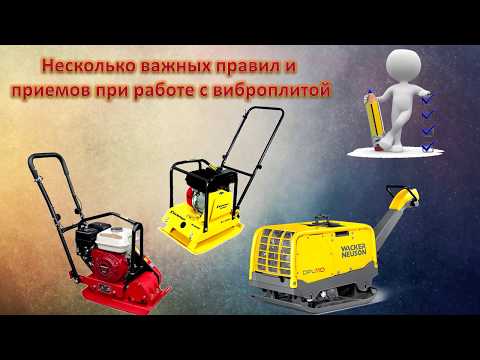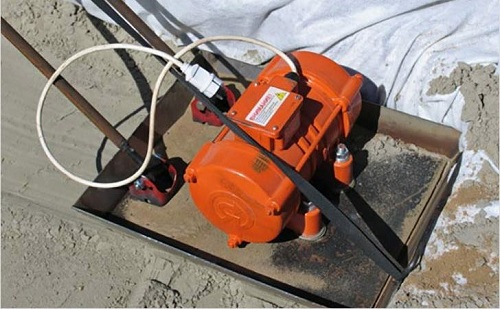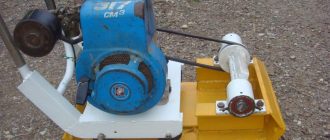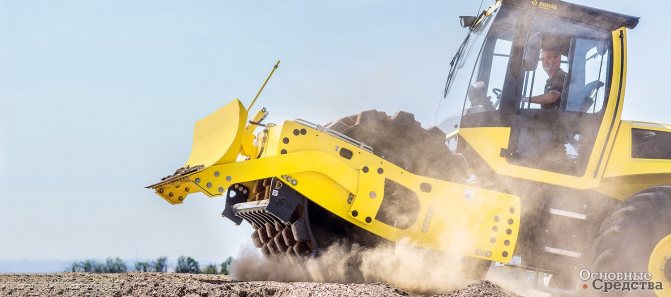Advantages and disadvantages
Electric vibrating plates are rather compact and technically uncomplicated equipment, which is easy to operate. This technique is maneuverable - it can be used in places where the use of bulky heavy equipment is impractical. The 220 V electric vibrating plate is much quieter when compared to diesel or gasoline versions. Due to this feature, it does not have a negative effect on the hearing organs during short-term use.
However, for long-term use, it is recommended to use special headphones or earplugs. Vibratory plates with an electric motor do not emit harmful exhaust gases, due to which they can be used even in closed rooms, as well as where harmful emissions and noise are unacceptable.
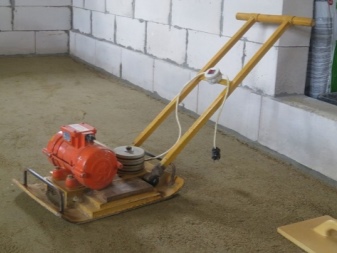

Other advantages of vibrating electrical technology include:
- unpretentious maintenance;
- affordable cost (pressing equipment operating from a 220 V network is several times cheaper than gasoline and diesel analogues);
- durability.
To increase the level of operator's safety, the equipment is equipped with specialized protective devices that reduce the risk of electric shock to a person. Electric vibrating plates also have some disadvantages. These include: low performance and dependence on the electrical network. Due to attachment to the source of energy, they are limited in use. For example, they cannot be used where there is no electricity or there are frequent interruptions in its supply.
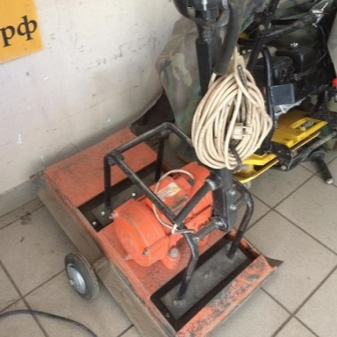
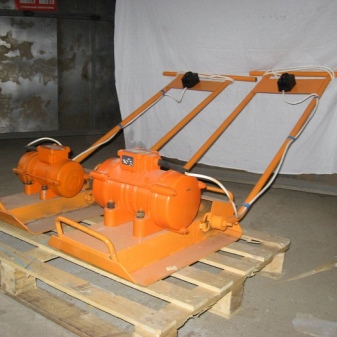
What is a vibratory plate and what is it for?
 For compacting soil, asphalt or other coating, special devices are used - vibrating plates.
For compacting soil, asphalt or other coating, special devices are used - vibrating plates.
During the construction of various objects, initial preparation and careful ramming of various types of loose and cohesive materials (gravel, black earth, clay, sand, crushed stone, asphalt, paving slabs, etc.) is necessary. Tamping contributes to better water resistance, filling voids and, in general, improving the bearing properties of the soil.
If the initial layer is not properly prepared, this can subsequently lead to the destruction of the foundation, subsidence of the working coating and other troubles.
The vibrating plate compacts the soil surface gently and evenly. It is used on limited construction sites, difficult repair areas, where the use of large construction equipment is impractical.
For example, in such cases:
- When laying paving stones or paving slabs.
- When patching the road surface.
- In a small area or area with a slope.
The principle of operation of the vibrating plate
To understand the principle of the vibrating plate, it is necessary to consider its device. This tool has four main parts:
- engine;
- cast iron or steel plate;
- vibrator;
- frame.
The base of the unit is a metal plate located at its foot. The vibrator is located in the central part of the plate, the engine is located on top. The engine drives the vibrator through a clutch and V-belt drive. Then, in the vibrator, circular motions are converted into vibrational ones.
From the vibrator, vibrational movements are transmitted to the plate, and from the plate directly into the ground. Thanks to this vibration and its mass, the unit performs the work - it compresses the soil of different densities and thicknesses.
The base of the vibrating plates is made of steel or cast iron, the engines are powered by gasoline, electricity or diesel.Due to different configurations, models have different engine power, weight, vibration moment.
Construction, types and principle of operation of the vibratory rammer
A manual electric or gasoline vibratory rammer consists of an engine, a drive, a vibratory block and a shoe. The torque of the vibratory rammer drive is transmitted through the gearbox to the vibration block or eccentric. After that, the vibrations pass to the sole or shoe and then to the surface. As a result, excess air is removed from the surface and increases its density. This is an important factor for the durable operation of the structure being erected. There are 3 types of rammers according to the type of installed engine:
- petrol vibratory rammer, with a two-stroke or four-stroke engine. A powerful, productive and mobile device. They are used outdoors, where there are no electrical networks;
- electric vibratory rammer. It is lightweight, compact, low-noise, maneuverable and environmentally friendly (does not generate harmful emissions). Used indoors. Powered by 220 V;
- diesel. It is used for large volumes of work, as it has high power and productivity. It is heavy and provides the deepest possible compaction of the surface. Economical, reliable.
Vibratory rammers differ in the following technical characteristics:
- shoe dimensions. Affect the mobility of the unit, the area of the processed space and the permeability;
- shoe vibration amplitude - stroke range. For soil compaction, a larger range is about 60 mm, and for tiles, a smaller range (up to 25 mm);
- performance. Indicates the speed of work (frequency of beats per minute);
- the presence of a reverse gear;
- weight and dimensions.
If we talk about indicators, then vibratory rammers differ in engine power (2.2–5.5 hp), in force (13–15 kN), in stroke range (vibration amplitude) - from 25 to 80 mm. Vibratory rammer productivity can reach 300 m2 / hour.
General characteristics of vibrators
Additional indicators when choosing units include:
- Working surface area.
- Vibration Effort.
- Engine power and type of fuel consumed.
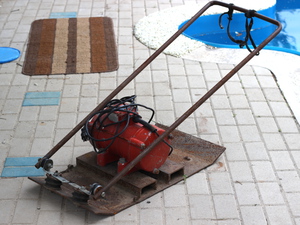
parameter should not exceed 0.3
Vibration force is a measure of the vibration power of the base mechanism. For dense coatings and soils, this characteristic should be as high as possible. Since with weak shocks, hard soil will not be compacted to the required density.
By the type of fuel used, engines are gasoline, electric and diesel. A vibrating plate using a gasoline engine among specialists is the most popular and convenient. The unit with a gasoline engine has a lower price when compared to a diesel unit, and it works in all weather and industrial conditions.
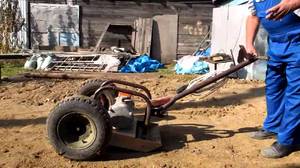
The diesel-driven unit is the most expensive, but the fuel for it is cheaper compared to the gasoline unit. The disadvantage of this type of drive is the high noise level.
The drive power determines the ability of the vibratory plate to move on a slope and on a viscous surface. The higher this characteristic, the easier the unit moves on the surface. The powerful engine moves forward by itself and does not require additional efforts from the employee. At a low power rating, the slab will bury itself in the ground, especially when working on a slope. The exception is models from the first type by weight, in which the weight of the plate and the engine power correspond to each other.
engine's type
A motor is required to drive the vibration exciter (vibrator). Depending on the type of fuel used, the following types of engines are distinguished:
- gasoline is the best option in terms of value for money. Although gasoline is more expensive than diesel, such a vibrating plate will initially cost less. It is characterized by high efficiency, productivity and low noise level.Such a mechanism will work in almost any conditions, and it will be possible to fill in gasoline even with a low octane number;
- diesel - seems more attractive, since fuel will cost less than gasoline. Yes, there will be savings in operation, but initially you will have to spend money - a diesel vibratory plate is much more expensive than a gasoline plate, therefore it has not become widespread. However, if the device is bought for very active use, then, probably, there will be a benefit, however, you will have to put up with the increased noise of the device. In addition, it is undesirable to use the unit at subzero temperatures;
- an electric motor will cost you the cheapest, but you can use such a plate compactor within the reach of electricity, which is limited by the length of the cord. If there is no electricity, work will be done at all. Yes, such units have the lowest noise level, but their power is also the lowest in the class. But the electric vibrating plate can be used indoors, in contrast to gasoline and diesel counterparts, which generate exhaust during operation.
Manufacturing instruction
A do-it-yourself vibrating plate with an electric motor will save a lot, since industrial units have a fairly high cost. The design of the tool is not very complex, and you can make it yourself quickly enough. Among the necessary materials and spare parts, it should be noted:
- Powerplant - is selected depending on personal preference. Many owners of household plots decide to make an electric 220 V vibrating plate with their own hands on the basis of a platform vibrator of the IV-98E model or any other.
- Channel - 2 pcs.
- The base for the working plate is sheet metal with a thickness of at least 8 mm.
- Soft cushions - are installed on the handles of the instrument and are necessary to damp vibration.
- Fasteners for the motor.
- Wheels - 2 pcs.
- Pipe.
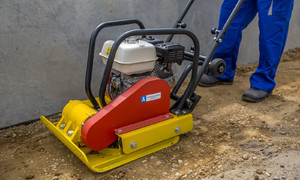 On a steel sheet, a grinder should make 2 cuts on both sides with a depth of 5 mm. They should be symmetrically positioned about 10 mm from the edge. Then the edges of the sheet should be bent, giving it the shape of skis, in order to avoid burying the plate during work. Places of cuts must be welded, thereby fixing their position.
On a steel sheet, a grinder should make 2 cuts on both sides with a depth of 5 mm. They should be symmetrically positioned about 10 mm from the edge. Then the edges of the sheet should be bent, giving it the shape of skis, in order to avoid burying the plate during work. Places of cuts must be welded, thereby fixing their position.

The same cannot be said for the gasoline internal combustion engine. Always check that all connections are secure before starting work.
It is imperative to periodically clean plugs of carbon deposits to extend their life. Between the first and second oil change, no more than 25 working hours should elapse.
Subsequent replacement can be done after 80 or even 100 hours.

